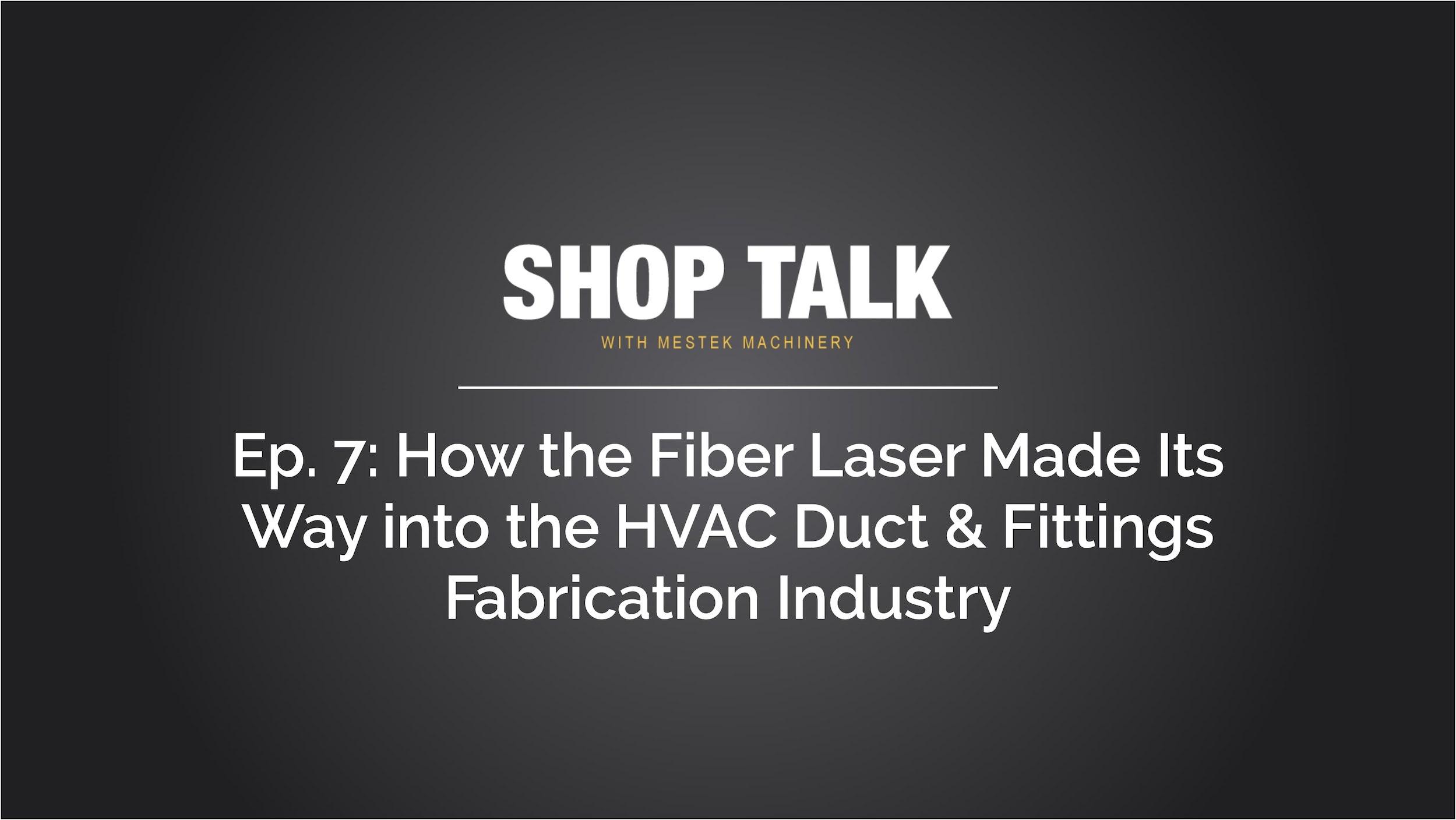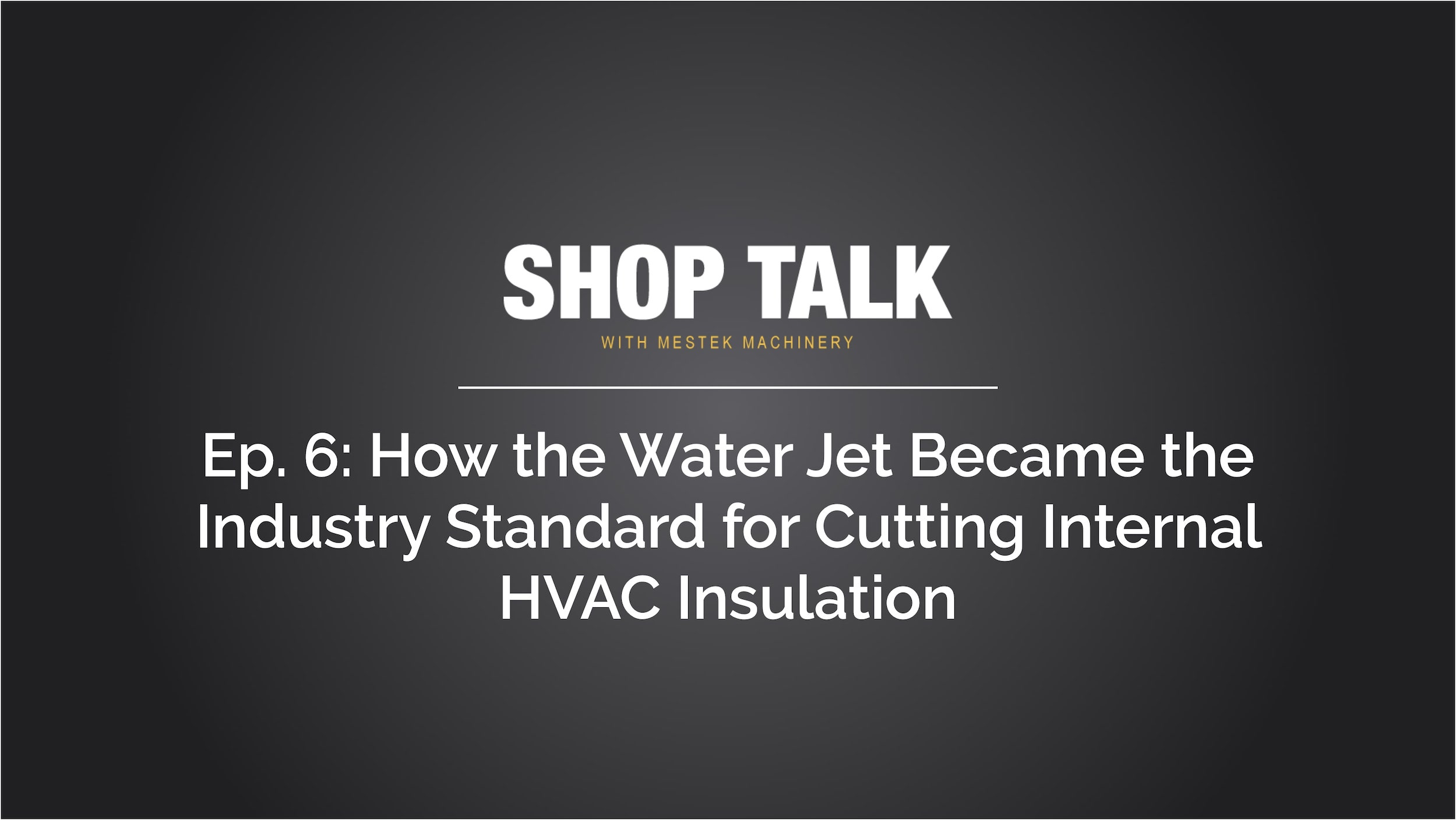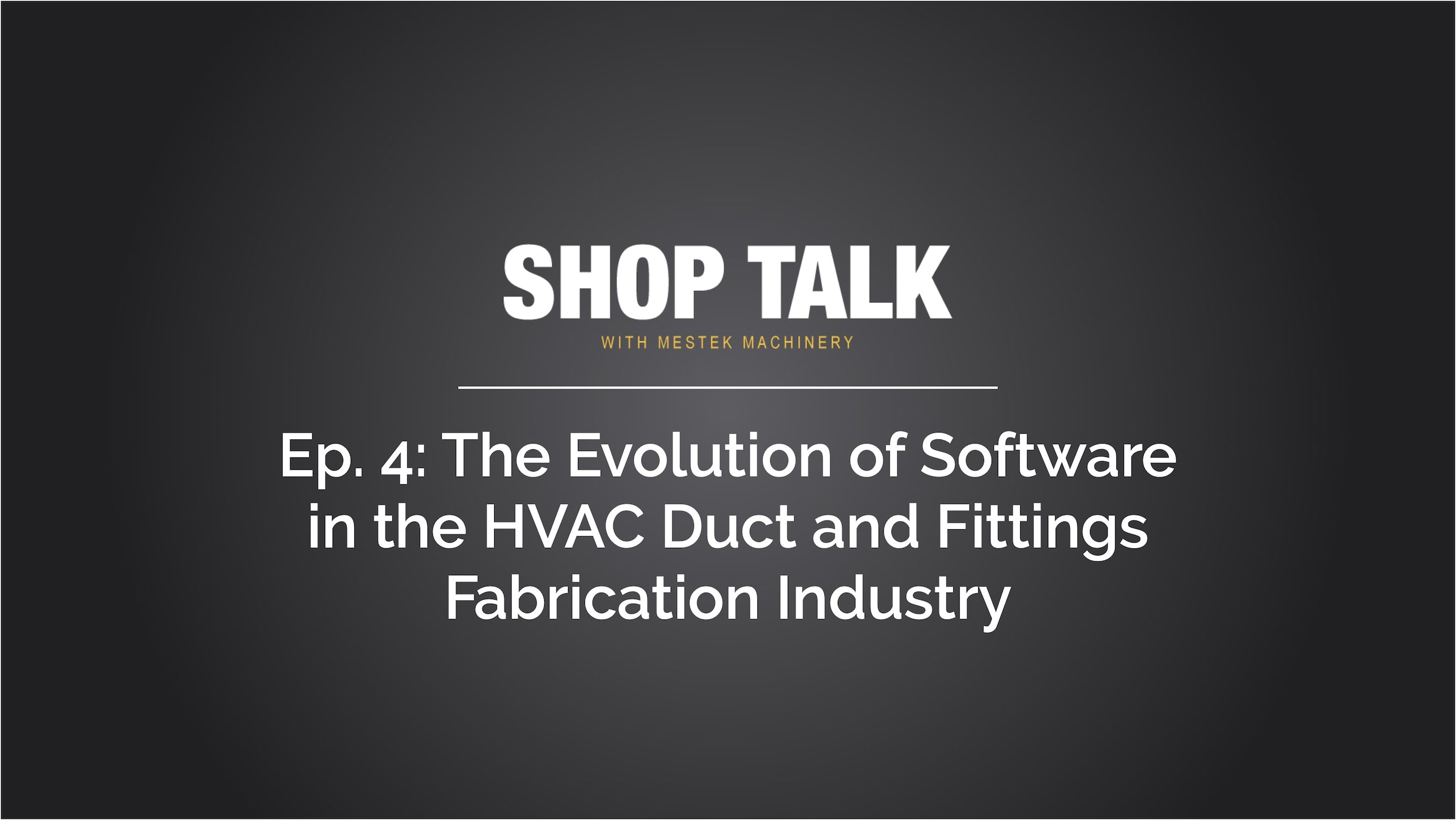Welcome to Shop Talk with Mestek Machinery — where we discuss the topics that matter most to the fabrication shops, contractors, and anyone else in the HVAC duct and fittings fabrication industry as you look for ways to improve your operations.
In this episode, John Welty is joined by Mike Bailey and David Daw — two gentlemen with over a combined 80 years in the industry — and they take a look at the innovations that have been introduced into the HVAC duct and fittings fabrication industry over the last 80 years or so and how they’ve impacted the industry. As you’ll see, Mestek Machinery and our brands been involved in a lot of these innovations and we continue to innovate as the industry continues to evolve. And as your operational needs change, we’d love an opportunity to help you achieve your objectives. So please don’t hesitate to reach out for a consultation. We’ll simply get some information about your operation and what you’re looking to do and see how we can help — there’s absolutely no obligation.
Meet the Panelists

John Welty
Owner | Welty Automation
- Welty Automation is a strategic partner providing machine automation and engineering support to Mestek Machinery
-
Started at Iowa Precision Industries in 1996 on the drafting board
-
Software development progressed within engineering, and then the factory, and now the HVAC Ductline controls

Mike Bailey
Senior VP of Sales | Mestek Machinery
- 27 years in the HVAC duct and fittings fabrication and sheet metal fabrication industries
- Bachelor of Science Degree | James Madison University
- Helped develop Premier Partner Program with SMACNA
- Partner to Trimble and Applied Software Cad to Cam Processes

David Daw
President | HVAC Inventors Systemation, Inc.
- Product Development consultant to Mestek Machinery
- HVAC fabrication industry technology inventor for over 50 years
- Inventor of Cornermatic corner inserter machines, specialized TDC and TDF corners, and Bendermatic (expected to hit the market in mid-2022)
Watch the Video
Listen to the Podcast
Read the Transcript
Hello everyone. I’m John Welty, and welcome to Shop Talk with Mestek Machinery. In today’s podcast, I’m joined by Mike Bailey and David Daw, and we’ll be talking about innovations that have been introduced in the HVAC duct and fittings fabrication industry over the last 80 years or so, many of which were introduced by Mestek Machinery and our brands, and how they’ve impacted the industry.
Mike, can you kick this off?
Yeah. This is one of the neater topics, I think, that innovation that started in 1938 by the Lockformer Company, up until 2022, basically almost every other year, every five years, every decade, showing innovation that this company’s been able to the duct fabrication world to improve that fabrication for the contractors, themselves.
David can speak to the 1938 innovation. I think he was around then, and I’ll speak more like to the 2000s, and that’s how this is going to work.

Yeah. I don’t know exactly when they started making the duct lines. He actually started with a downspout gutter machine, which is where Art Welty first started, because he was installing it. And he’d build a machine in order to make his own gutter, just to save himself labor. Right?
And then later, started selling that and put a lot of people in the business, entrepreneurs by setting them up with a truck, coil stand, and a machine that could produce gutter right out of the back of their trucks.
Well, during the ’40s and during the war, and then into the late ’40s, is primarily, if I’m not mistaking, heating that they were concerned for. There wasn’t much central air at the time, but there was some ducting of furnace.
But it wasn’t until air conditioning really took off after World War II, that really started moving to develop this. And I believe, it was again, it was all sheet stock up through the 1950s. But it wasn’t … I got into this industry 1968, 1969. I think the first coil processing machine for making, for duct work, was about maybe ’65, ’66.



All being done at Lockformer. And Welty joined forces with George Lamberson at Lockformer, Leo Gayle, engineering over there, and Bill Truska, head of sales. They joined together with Cutie Miskell at Welty, and had a … I don’t know in terms of … How it was in finance, but actually, Welty could take an order for a new line and sell the lock from a part, and they’d bought it from Lockformer. Well, Lockformer could do it themselves, too.
But it was a joint effort between Lockformer’s roll forming ability and Welty’s coil processing. And they merged that together, which was the first really significant line. Again, 1970, ’71.
But the insulation that came in ’73, one of the biggest problems was adding insulation onto that. That was an interesting story because they tried to join forces with Lockformer again, to do what became the Insomatic and Lockformer backed out of it because George Lamberson was afraid of selling a machine that used solid-based adhesives, and a fire problem on the line. Backed out of it and dumped it back into Welty. Roger Welty went out and visited a contractor in Murfreesberg, Tennessee, that had actually developed it, that machine.
But I could see it in 1970, and told Roger, “You ought to go down and take a look at this.” He bought the rights of the machine, and it’s basically not much changed since.
Not to belabor this, but the ’80s, if you look back on the past 50 years, was definitely the decade. You had the first slide on and then TDC for your joint connections. Then you added the plasma cutting tables.
You actually … Another very big significant was the development of water-based adhesives. It was all solvent-based at the time, which was had environmental issues, fire problems on the line. And then, it went to water-based.
And then the last thing, again, was the introduction of the computerized cam cad systems. So those were four huge events that changed this industry.
Yeah, and I think that created some issues to with architects and engineers when it came to roll flange versus sub long flange. There was a lot of arguments, you could say about, between building owners and architects, as to which one to specify and use.
And SMACNA decided to make a choice on that in 1995, and implemented the roll on flange into the DCS, which also implemented tie rod construction for mid-panel, end panel reinforcement, which cleaned everything up. It really did from a duct construction.
Or TDC (Transverse Duct Connector), TDF (Transverse Duct Flange). Roll formed flange. That was the constant battle, which one was going to be spec’d and which one was better and which one was going to be used. Owners and architects and building owners, they all argued about it.
I think, the story I heard, SMACNA finally had to make a decision, and they made that decision to go with the Lockformer TDC, rolled form flange, and mid-panel, end panel tie rod construction.


If somebody had told me when I first started in this industry, if you look at the original or the first SMACNA manual … DCS manual I have is ’75, and if you look at a number of what they call, T-connections or transverse connections, it’s seven or eight of them.
And if you’d have told me today, around the world there’s one connection, 35mm flange, I never, never, I don’t believe that, never. But there was a war, for very selfish reasons, between the use of a slide on which would proprietary products, and TDC, TDF which was basically a contractor fab product. This gets into a much deeper story, but you’re right. It became a problem because specifications weren’t in the SMACNA duct construction standards. SMACNA has had a history of not approving proprietary products.
So the workaround that, was to go out and test their own. It happened to be TDC, but the test, the rolled on flange and then re-rating them as their own joint, and that did solve the problem. Just completely solved it.
Then we got into 2000s, and now we’re talking about water jets cutting insulation. We’re talking about coil lines are highly automated. Just a lot more innovation in 2000, up to date, 2022.
When I look at it, and I’m proud to be associated with it, is this company has been part of that innovation or the innovation world, the duct fabrication, since 1938, and they just never stopped. They had some problems. They had issues, right? But it just never really stopped them. So I’m proud to have that kind of team, that’s still thinking and innovative. David’s been a big part of that as well. There’s more to come. Right?
So we always look at it, we have to continue to innovate. We have to continue to bring new products to the industry for us to be viable, to be sustainable.
Lockformer Water Jet Insulation Cutting Machine
Introduced in early 2000’s
Duct-O-Matic Automated Coil Line
Introduced in 2022

Yeah. The development of the corner machines in the ’90s, it saved a lot of time. But Mike’s right, I can only think of maybe one product that was not really, in my 50 years, going back to the … Well, the Shopmaster was an Engel product, but that’s now a part of Mestek group.
But if you look at the Mestek group today, I can only think of one product that was not of any significance, that was not developed by this company and the individual brands. Up until today.








